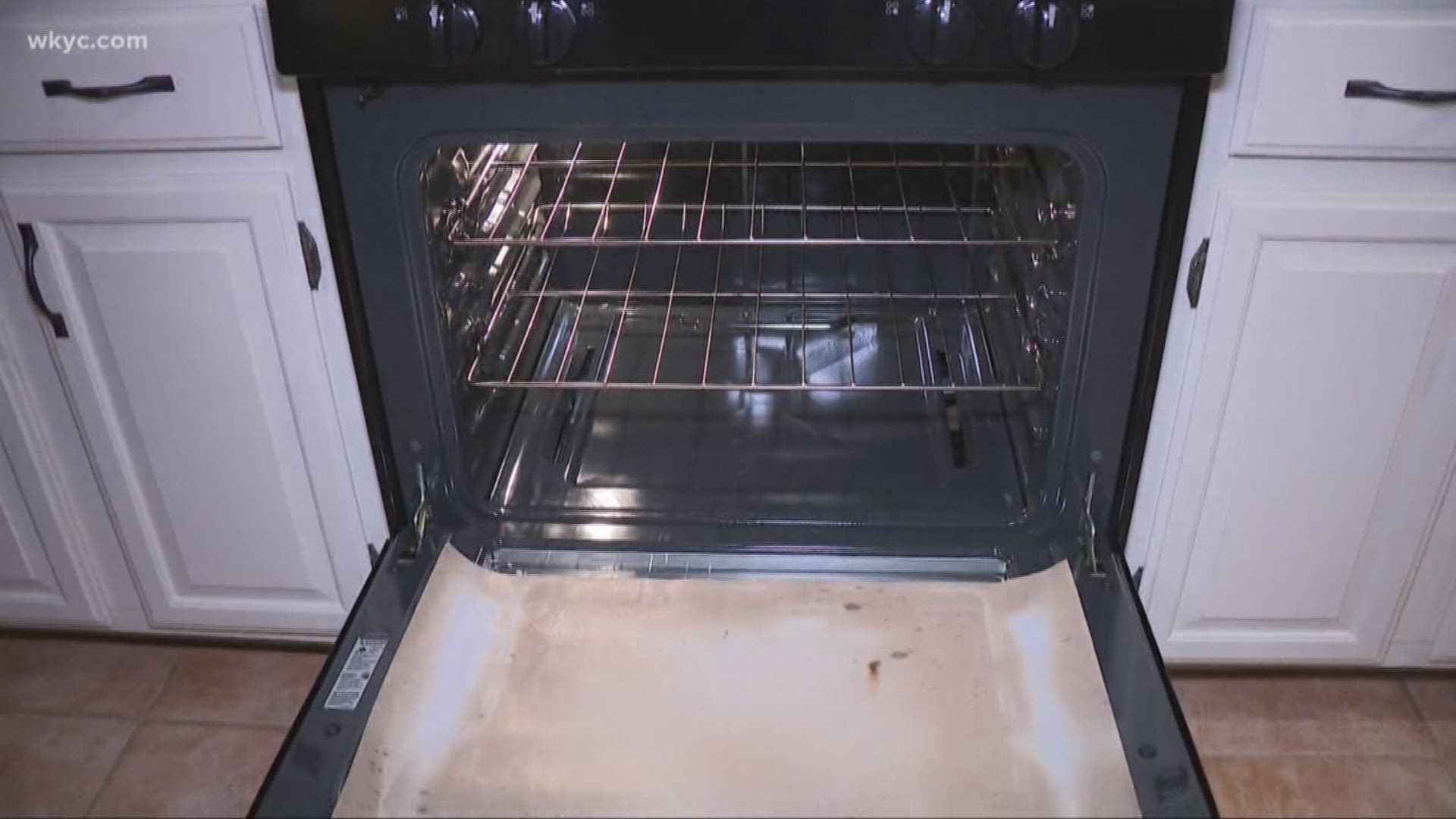Many of us use mats or aluminum foil on the bottom of our ovens, to catch anything that drips off while we're cooking.
Recently, however, a Mentor woman learned just this morning how dangerous they can be.
Nancy Citino is quite proud of her new Kenmore gas range. It’s the centerpiece of her newly remodeled kitchen. Since it’s not a self-cleaning oven, she purchased oven liners to place on the bottom to help keep it clean.
But each time she used her oven, she noticed the smell of natural gas. Sometimes her smoke alarm would go off too. She started thinking that maybe her range was installed improperly so she called Dominion East Ohio gas to come out and check.
“As soon as he opened up the oven he says, 'Get that thing out of there,'" Nancy said, referring to the liner.
The Dominion employee told Nancy that she wasn’t the only one having issues with the oven liners: He visited other homes and noticed the same problem.
While the liner caught spills, it blocked the vents in the bottom of the oven, restricting airflow. Like many of us—Nancy, who has used an oven for years—never thought to read the safety manual for her new range. But in the safety guidelines of her manual, the second warning states:
"Never cover any slots holes or passage holes in the oven bottom or entire oven rack with materials such as aluminum foil. Doing so blocks air through the oven and may cause carbon monoxide poisoning. Aluminum foil linings may cause heat buildup and a fire hazard."
We reached out to Dominion and their appliance safety expert told us the following for natural gas oven users:
- The liners need to be installed per the liner manufacturer’s instructions.
- Some oven-liner products can be placed directly on the “floor of the oven,” while some oven-liner products must be placed on the bottom rack.
- If the oven-liner manufacturer allows placement on the “floor of the oven,” any slots or vents [on the oven floor] cannot be blocked or covered. These product instructions state: “ensure that your oven air flow is not affected”.
- Blocking these slots or vents will impede proper air currents needed for even oven cooking temperatures and also cause elevated carbon monoxide levels and unusual smells.
- Purchase a liner that is not “over-sized.” Purchase one the does the job safely (without blocking the slots or vents).
Nancy says she’s going to listen to the Dominion tech who told her just to toss them. It’s much safer just cleaning the oven.
Nancy also didn’t have a CO detector in her home and now knows why she needs one. She wanted her experience shared so others learn from it, and knows how fortunate she is.
“Match wise, smoker wise, oxygen wise, what might of happened? The house probably would have blew up,” she said.

